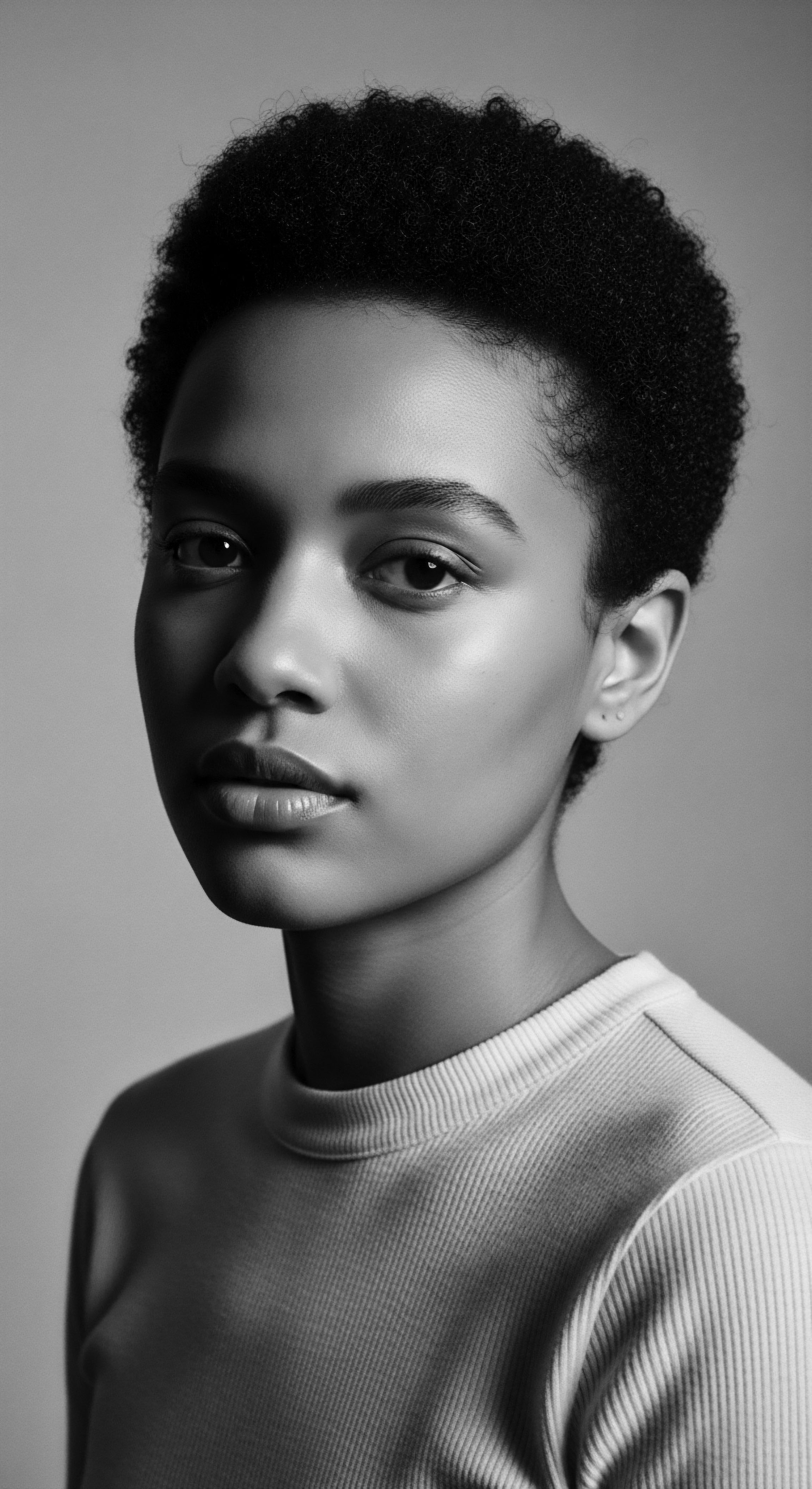
Fundamentals
The very fabric of textured hair, from the deep root to the liberated strand, speaks a language of adaptation and resilience. To truly grasp the Definition of “Climate Regulation” within the vibrant sphere of Black and mixed-race hair heritage, one must first recognize hair as a living archive, a sentinel intricately attuned to its environment. At its core, this concept refers to the inherent, biological wisdom of the hair fiber and scalp to respond to atmospheric conditions, alongside the ingenious, time-honored practices our ancestors cultivated to assist and augment these natural responses.
Consider for a moment the profound connection between the air we breathe, the sun that kisses our skin, and the stories held within each coil. When we speak of Climate Regulation for textured hair, we are not simply referring to a scientific mechanism in isolation. Instead, we are exploring the harmonious interplay between the physical properties of our hair – its density, its unique cuticle arrangement, the very geometry of its curl – and the external forces of humidity, temperature, and solar intensity.
It encompasses how these elements shape the hair’s state, influencing everything from its moisture content to its structural integrity. More than that, it reveals how generations, through inherited knowledge, fashioned rituals and remedies to help hair maintain balance and vitality, regardless of the elemental shifts around them.
Climate Regulation, for textured hair, is the ancestral harmony between hair’s natural environmental responses and the wisdom-filled practices designed to sustain its vitality through elemental shifts.
This initial understanding grounds us in the fundamental truth that textured hair, often seen as a challenge in Western beauty paradigms, is, in fact, a marvel of natural engineering. Its unique structure, characterized by its elliptical cross-section and the spiral orientation of its keratin fibers, allows it a particular relationship with atmospheric moisture, absorbing it readily to swell and often to shrink, contributing to the experience of frizz or expansion depending on the conditions. This inherent responsiveness is a primary component of its natural climate interaction. The historical context shows us that our forebears were not merely styling hair; they were engaging in a sophisticated form of environmental interaction, a dance with the elements that ensured hair’s health and demonstrated respect for its natural state.

The Scalp’s Ancient Shield
The scalp, the very ground from which our hair springs, also plays a crucial role in this elemental dialogue. It is a living, breathing landscape, home to thousands of follicles, each a tiny channel of connection to our internal well-being and the world outside. The hair that emerges from these follicles acts as a natural canopy, offering a primary layer of protection. This protective shield has been an unwritten aspect of our ancestral journey across sun-drenched lands and varying humidities.
One might reflect upon how tightly coiled hair, a signature characteristic for many of us, actually provides superior shielding. Scientific inquiry suggests that tightly curled hair provides more effective protection for the scalp against intense solar radiation, simultaneously diminishing the body’s reliance on sweat for cooling. This finding, illuminated by researchers studying human thermoregulation, underscores the profound evolutionary wisdom inherent in our hair’s diverse morphology (Lasisi et al.
2023). This is not a modern discovery, but a scientific articulation of what ancestral wisdom perhaps already knew intuitively ❉ that our hair’s conformation offered significant benefits in challenging climates.
Across various regions where textured hair has flourished for millennia, the scalp’s health was meticulously cared for, often with natural balms and preparations. These traditional applications were not just about aesthetics; they were about creating an optimal microclimate for hair growth, safeguarding against the ravages of sun, wind, and aridity. The meticulous parting, braiding, and layering of hair in many ancestral styles can be seen as deliberate strategies to manage this crucial epidermal interface, ensuring both protection and proper aeration.
- Density ❉ The close-packed nature of tightly coiled strands forms a denser canopy, offering superior shade for the scalp, reducing direct solar exposure.
- Airflow ❉ The helical structure of coiled hair allows for air pockets to form, creating a layer of insulation that can help regulate scalp temperature.
- Moisture Balance ❉ Hair’s capacity to absorb and release moisture affects its pliability and susceptibility to breakage, a delicate balance often managed through traditional oiling practices.
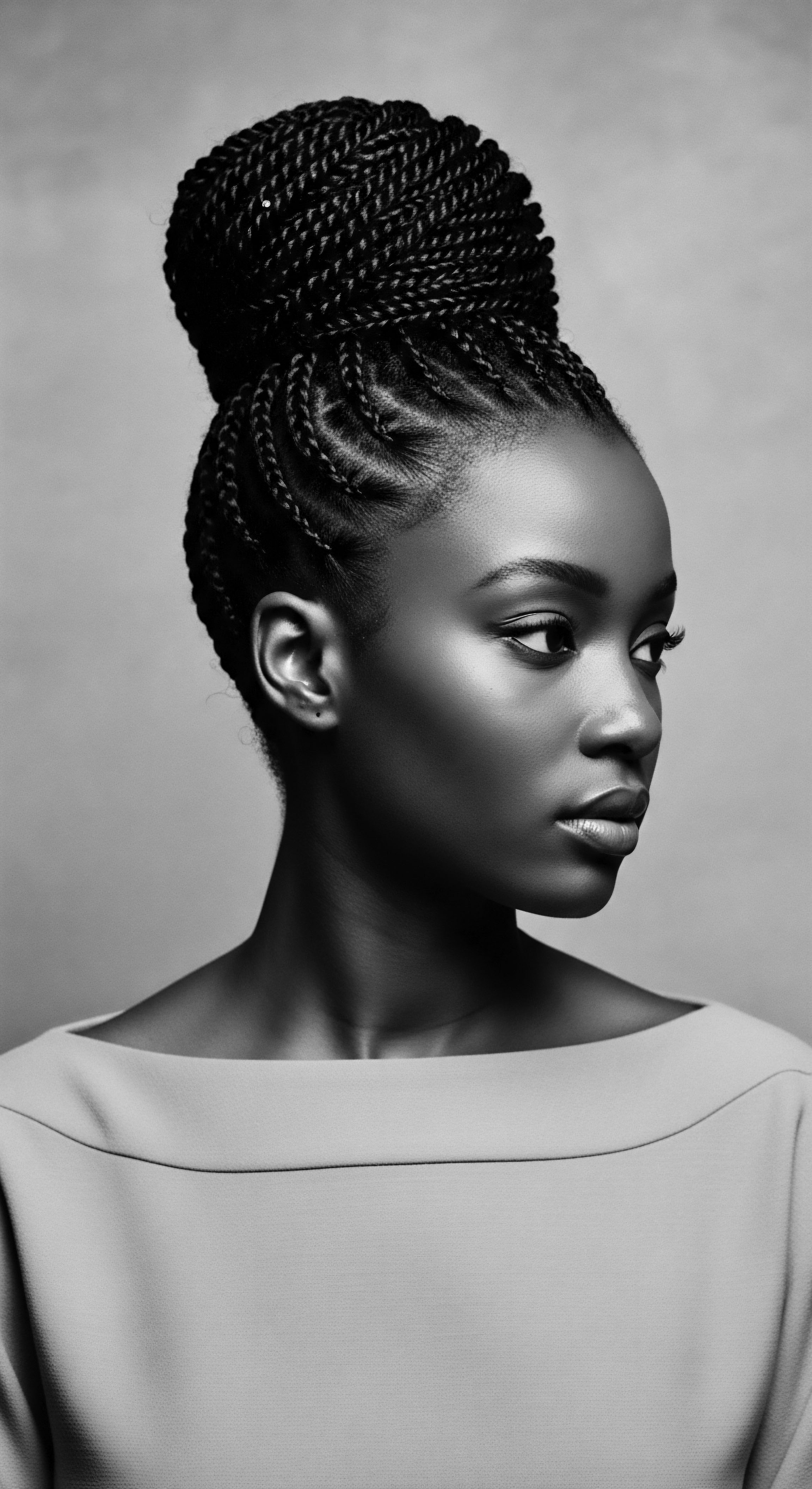
Intermediate
Stepping beyond the fundamental biological responsiveness, the Meaning of Climate Regulation for textured hair expands into the realm of intricate cultural adaptation and community knowledge. This involves recognizing the continuum of practices passed through generations, methods that actively shaped and sustained hair health within the parameters of specific environmental challenges. It delves into the adaptive strategies that transcended mere survival, elevating hair care to an art form, a symbol of identity, and a profound connection to ancestral landscapes.
Consider the daily realities faced by our forebears ❉ relentless sun in arid plains, pervasive humidity in rainforests, or chilling winds in highland plateaus. Each environment demanded a particular discernment, a specialized approach to maintaining the vitality of textured strands. The understanding of Climate Regulation, at this intermediate level, is an exploration of how cultural ingenuity met environmental imperative. It is an acknowledgment that the rich diversity of African and diasporic hair practices reflects direct responses to the climates they inhabited, shaping not only care routines but also the very aesthetic of hair.

Ancestral Wisdom and Environmental Attunement
Across the vast African continent and among its descendant communities globally, traditional hair care practices emerged as living texts of climate regulation. These practices were not random occurrences; they were the refined distillation of empirical observation over centuries, a profound scientific understanding born from intimate connection with the natural world. From the Sahel to the southern plains, from the Caribbean islands to the Americas, a mosaic of methods developed, each tailored to specific climatic demands.
The historical arc of textured hair care reveals a remarkable adaptive genius, where ancestral practices served as vital tools for hair’s climate regulation, ensuring its health and symbolizing cultural tenacity.
For instance, in the dry, often windswept expanses of Namibia, the Himba people have long utilized a distinctive paste known as Otjize—a rich blend of ochre, butterfat, and aromatic resins. This application, with its characteristic reddish hue, is not solely for aesthetic beauty or social status; it serves as a powerful protective layer for both skin and hair, guarding against the intense solar radiation and the dehydrating effects of arid winds. It is a poignant example of how ancestral knowledge transformed locally available resources into sophisticated climate-regulating agents for the body’s outermost expressions. Similarly, the Mbalantu women, also from Namibia and Angola, are celebrated for their extraordinary hair length, achieved through generations of meticulous care involving a thick paste of Omutyuula (acacia) bark and fat.
This protective regimen, applied from a young age, shields the hair from environmental damage, allowing for remarkable growth and preserving its integrity in challenging dry climates. These are not merely beauty routines but deep-seated ancestral responses to the demands of their surroundings.
| Climatic Zone Arid/Dry Climates (e.g. Sahel, Namib Desert) |
| Traditional Practice/Ingredient Shea Butter (West Africa), Otjize (Himba, Namibia), Omutyuula Paste (Mbalantu, Namibia) |
| Climate Regulation Function Provides intense moisture retention, creates a physical barrier against sun and wind, seals cuticles to prevent moisture loss, and offers UV protection. |
| Climatic Zone Humid/Tropical Climates (e.g. Caribbean, West Africa) |
| Traditional Practice/Ingredient Coconut Oil, Aloe Vera, various protective styles (braids, twists) |
| Climate Regulation Function Manages frizz by sealing cuticles, prevents excessive swelling and hygral fatigue, protects against microbial growth in damp conditions, and reduces manipulation. |
| Climatic Zone Temperate Climates (after migration) |
| Traditional Practice/Ingredient Adaptation of practices; use of lighter oils, focus on scalp health to balance dryness from indoor heating/cooling. |
| Climate Regulation Function Modifies ancestral methods to suit new environmental stressors, often prioritizing scalp circulation and moisture for hair not constantly exposed to extreme elements. |
| Climatic Zone These practices illuminate the profound adaptability and environmental wisdom embedded within textured hair heritage. |

The Role of Protective Styling
Beyond topical applications, the very art of protective styling emerges as a powerful form of Climate Regulation. Styles such as braids, twists, cornrows, and locs, deeply embedded in the cultural heritage of Black communities, served multiple purposes. They were aesthetic expressions, identity markers, and, critically, practical mechanisms for managing hair in diverse climates. By gathering and securing the hair, these styles minimize exposure to environmental stressors – reducing tangling from wind, preventing excessive moisture absorption in humidity, or protecting against abrasion and breakage caused by daily life.
The resilience of these styles, often maintained for extended periods, allowed for strategic preservation of moisture and reduced manipulation, which are paramount considerations for textured hair. This practice speaks to a deliberate, thoughtful approach to hair care, where ancestral hands choreographed intricate patterns not just for visual delight, but for hair longevity and protection. It is a testament to the intuitive understanding that hair, like the body it graces, requires mindful tending to thrive amidst the world’s changing moods.
The very concept of “protective” goes beyond simple physical safeguarding. It extends to the preservation of the hair’s internal moisture, which is constantly challenged by environmental factors. High humidity can lead to hygral fatigue (repeated swelling and shrinking), while dry air can strip moisture, leaving hair brittle. Ancestral styling offered a means to regulate this internal moisture balance, creating a stable environment within the style itself, shielding the delicate hair shaft from the volatile whims of the outside world.
- Reduced Exposure ❉ Protective styles limit the hair’s direct exposure to sun, wind, and extreme temperatures, minimizing environmental damage.
- Moisture Retention ❉ By keeping hair bundled, these styles help to trap moisture within the strands, combating dryness in arid or cold conditions.
- Minimized Manipulation ❉ Less daily combing and styling reduces mechanical stress, preventing breakage and allowing hair to retain its length.
- Scalp Protection ❉ Certain styles, especially those with covered scalps or thick bases, provide an additional layer of insulation for the delicate skin beneath.
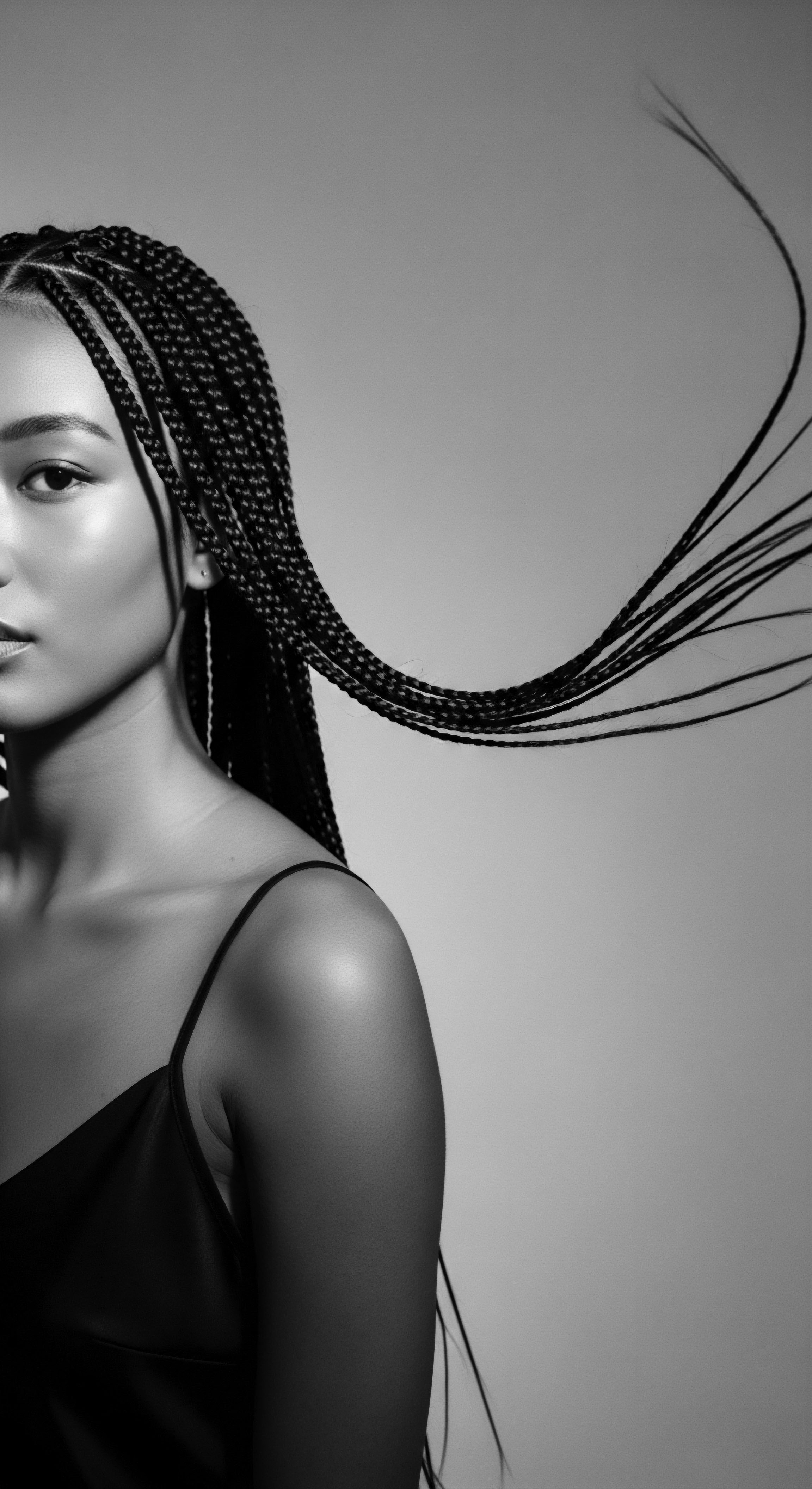
Academic
The academic Definition of Climate Regulation, when applied to textured hair, transcends superficial observations, delving into the sophisticated interplay of biomechanics, ethnobotany, and cultural anthropology. It mandates a rigorous examination of how the hair’s unique molecular and macroscopic properties interact with environmental physics, and how human societies, particularly those of African and mixed-race descent, developed highly specialized systems of care that acted as external regulatory mechanisms. This is not a quaint historical footnote; it represents a deep, adaptive intelligence embedded within the very lineage of textured hair, a testament to human ingenuity in maintaining homeostasis in the face of profound climatic diversity.
At this level of scrutiny, Climate Regulation in the context of textured hair demands a comprehension of hair as a complex biological polymer responding to hygroscopic forces. The characteristic elliptical cross-section and helical conformation of highly coiled hair types, distinguishing them significantly from straight or wavy counterparts, contribute to a distinct surface area-to-volume ratio and a unique pathway for moisture absorption and desorption. This inherent structural variability means textured hair exhibits a heightened sensitivity to changes in atmospheric humidity, leading to phenomena like frizz (due to differential swelling of the cortex and cuticle) or significant shrinkage. The academic lens requires us to dissect these biophysical responses and understand how traditional care practices mitigated or optimized them.
Academic inquiry into Climate Regulation for textured hair reveals an intricate web of biophysical adaptations, ethnobotanical wisdom, and socio-cultural practices, all meticulously designed to sustain hair vitality across diverse environmental spectra.
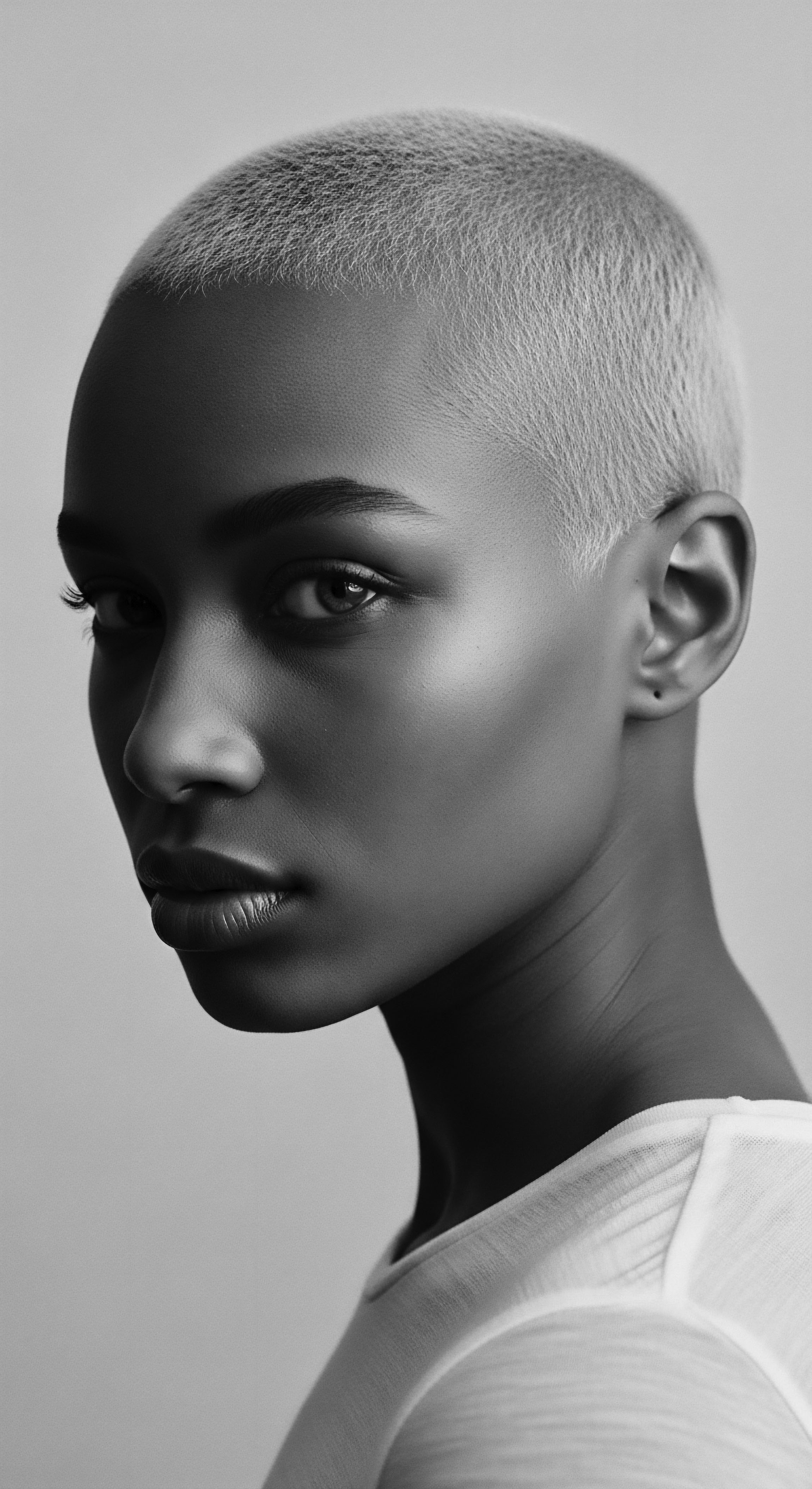
Biophysical Responses and Adaptive Stratagems
The Meaning of Climate Regulation extends into the molecular architecture of the hair shaft itself. The keratin proteins within textured hair, arranged in complex microfibrils and macrofibrils, respond dynamically to the presence of water molecules. In humid environments, water permeates the hair shaft, causing it to swell and potentially disrupt cuticle alignment, leading to the characteristic frizzed appearance.
Conversely, in desiccating conditions, moisture loss results in a stiffening and increased brittleness, heightening the risk of breakage. The academic inquiry into this dynamic explores how these intrinsic responses prompted the development of external interventions.
Consider the science behind ancestral practices ❉ the strategic application of natural lipids, such as shea butter or specific plant oils, was not merely an aesthetic choice. From an academic perspective, these substances, rich in fatty acids and occlusive properties, served as epidermal and hair shaft barriers. They reduced the rate of transepidermal water loss from the scalp and minimized the hair’s direct exposure to atmospheric moisture, thereby regulating its internal humidity equilibrium. This traditional knowledge of material science, albeit empirically derived, aligns precisely with modern dermatological principles of skin and hair barrier function.
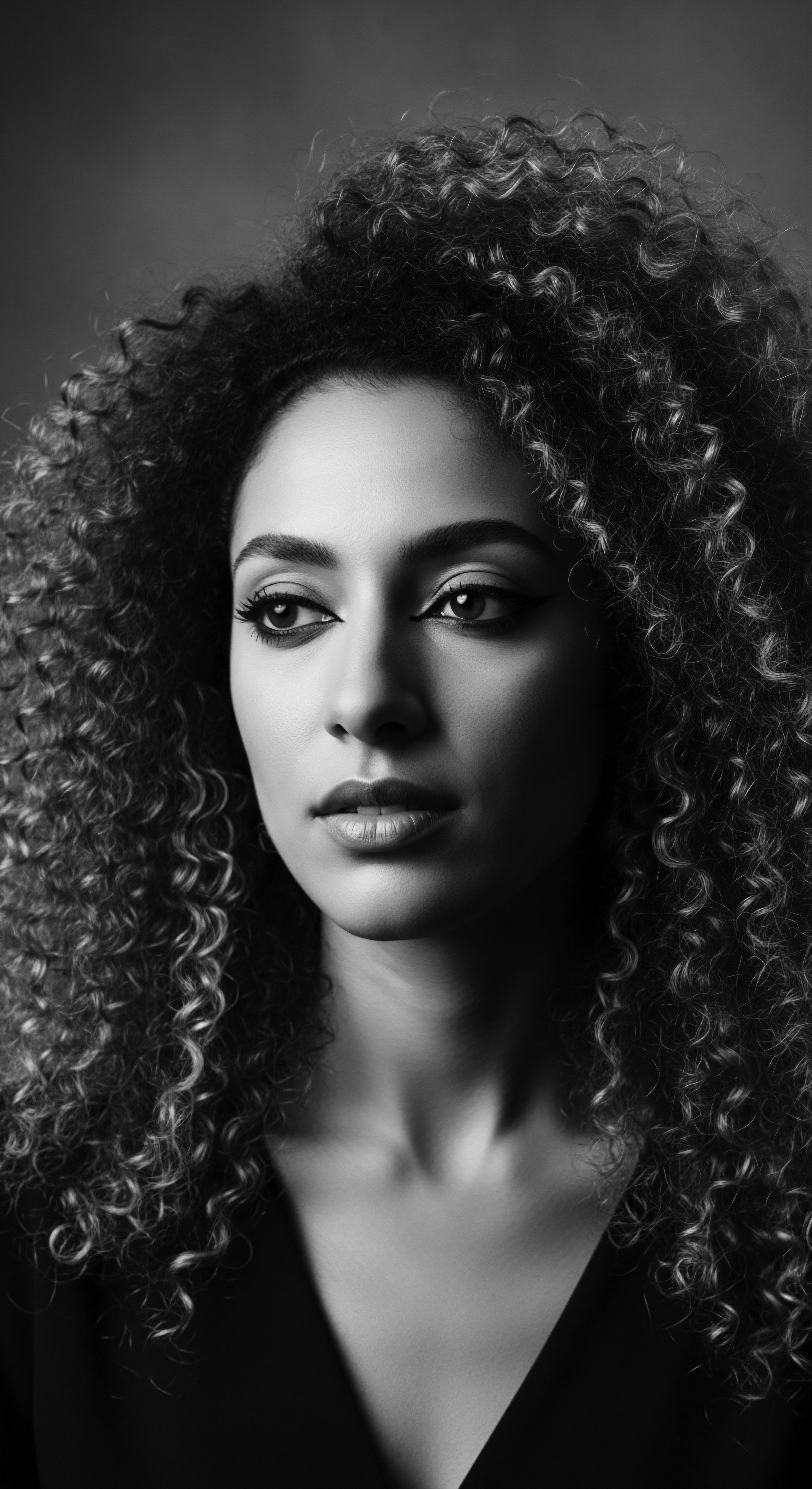
Ethnobotanical Wisdom ❉ A Pharmacopoeia of Regulation
The ethnobotanical dimension of Climate Regulation reveals a profound, localized pharmacopoeia of natural ingredients, each selected for its specific interaction with hair and the prevailing climate. Across diverse African regions, indigenous communities meticulously identified plants with properties that could either retain moisture in arid zones or manage swelling in humid ones. The understanding here is not just descriptive but analytical ❉ discerning the active compounds in these plants and their mechanisms of action.
| Botanical Name (Common Name) Butyrospermum parkii (Shea Tree) |
| Geographic Origin/Context West and East Africa, Sahel region |
| Proposed Mechanism of Climate Regulation Shea butter's high concentration of oleic acid and stearic acid provides an occlusive layer, sealing moisture into the hair shaft and scalp, crucial in dry, sun-exposed climates. It also possesses natural UV-absorbing properties. |
| Botanical Name (Common Name) Adansonia digitata (Baobab Tree) |
| Geographic Origin/Context Sub-Saharan Africa, dry savannas |
| Proposed Mechanism of Climate Regulation Baobab oil is lightweight yet deeply moisturizing, rich in vitamins. Its mucilaginous compounds in the fruit pulp can provide slip and conditioning, aiding detangling and reducing mechanical stress in climates prone to hair brittleness. |
| Botanical Name (Common Name) Ricinus communis (Castor Bean) |
| Geographic Origin/Context Northeast Africa, widespread globally |
| Proposed Mechanism of Climate Regulation Castor oil, particularly Jamaican Black Castor Oil, is highly viscous and dense. Its application creates a protective barrier, preventing moisture loss and reinforcing the hair shaft against environmental damage in various climates, from humid to dry. |
| Botanical Name (Common Name) Aloe barbadensis miller (Aloe Vera) |
| Geographic Origin/Context North Africa, parts of East Africa, widespread |
| Proposed Mechanism of Climate Regulation Aloe vera gel contains polysaccharides and glycoproteins that act as humectants, drawing and retaining moisture. It soothes the scalp, reduces inflammation, and can provide a light, hydrating layer, beneficial in both humid and moderately dry conditions for balancing moisture. |
| Botanical Name (Common Name) These botanical selections underscore a sophisticated, place-based knowledge of natural elements as agents of hair health and climatic equilibrium. |
The Mbalantu women of Namibia offer a compelling case study in this ethnobotanical precision. Their ceremonial and daily application of a paste derived from the powdered bark of the Omutyuula Tree (Acacia sieberiana) blended with fat, exemplifies a nuanced approach to hair regulation in an arid environment. The academic inquiry here examines the potential properties of Acacia sieberiana bark – its tannins, resins, or other compounds – that contribute to hair strength, resilience, and length retention, forming a protective cast against the harsh climate.
This continuous, multi-year application of the paste, rather than transient treatments, illustrates a long-term Climate Regulation strategy, fostering a stable micro-environment for the hair’s sustained growth and integrity. It is a systematic, culturally embedded form of biomimicry, learning from and working with nature to achieve desired outcomes.

Socio-Cultural Dimensions ❉ Regulating Identity and Community
Beyond the individual strand, Climate Regulation for textured hair also encompasses profound socio-cultural mechanisms. Hair, being a highly visible marker, became a canvas upon which identity, status, spirituality, and collective resilience were inscribed. The “regulation” here refers to the communal norms, traditions, and even economic systems that dictated hair care, styling, and adornment in response to environmental dictates and social dynamics. During periods of immense societal upheaval, such as the transatlantic slave trade, hair practices became potent forms of cultural preservation and quiet acts of defiance.
In new, often hostile climates, enslaved Africans adapted ancestral hair knowledge. The forced migration introduced them to different plant ecologies and climatic conditions, necessitating a re-evaluation and reinvention of hair care. The enduring Meaning of this adaptation lies in the tenacious transmission of hair knowledge across generations, often covertly, adapting ingredients and techniques to the new environmental realities while retaining the core protective and identity-affirming principles. The practice of covering hair with scarves, for example, which served a practical purpose of sun protection and cleanliness in Africa, acquired additional layers of meaning in the diaspora ❉ a symbol of modesty, a covert expression of cultural identity, and a pragmatic shield against both the elements and oppressive gazes.
This demonstrates how Climate Regulation morphed from a purely environmental adaptation to a socio-cultural act of survival and self-determination. The ability to maintain textured hair, despite the absence of traditional resources and the imposition of Eurocentric beauty standards, speaks volumes about the human spirit’s capacity for adaptive persistence, with hair acting as a silent, yet powerful, testament to heritage.
The interplay of collective practices, from communal braiding sessions that ensured consistency in styles (and thus, protection) to the sharing of knowledge about plant-based remedies, formed a collective “regulatory” body for hair health. This communal aspect ensured that individual hair care was not an isolated act but a shared responsibility, strengthening community bonds while also preserving hair’s integrity against environmental assaults. The systematic approach to caring for textured hair, often through generations of shared wisdom, allowed for a continuous refinement of methods, ensuring that hair remained a source of pride and strength, irrespective of the external climate – physical or social.
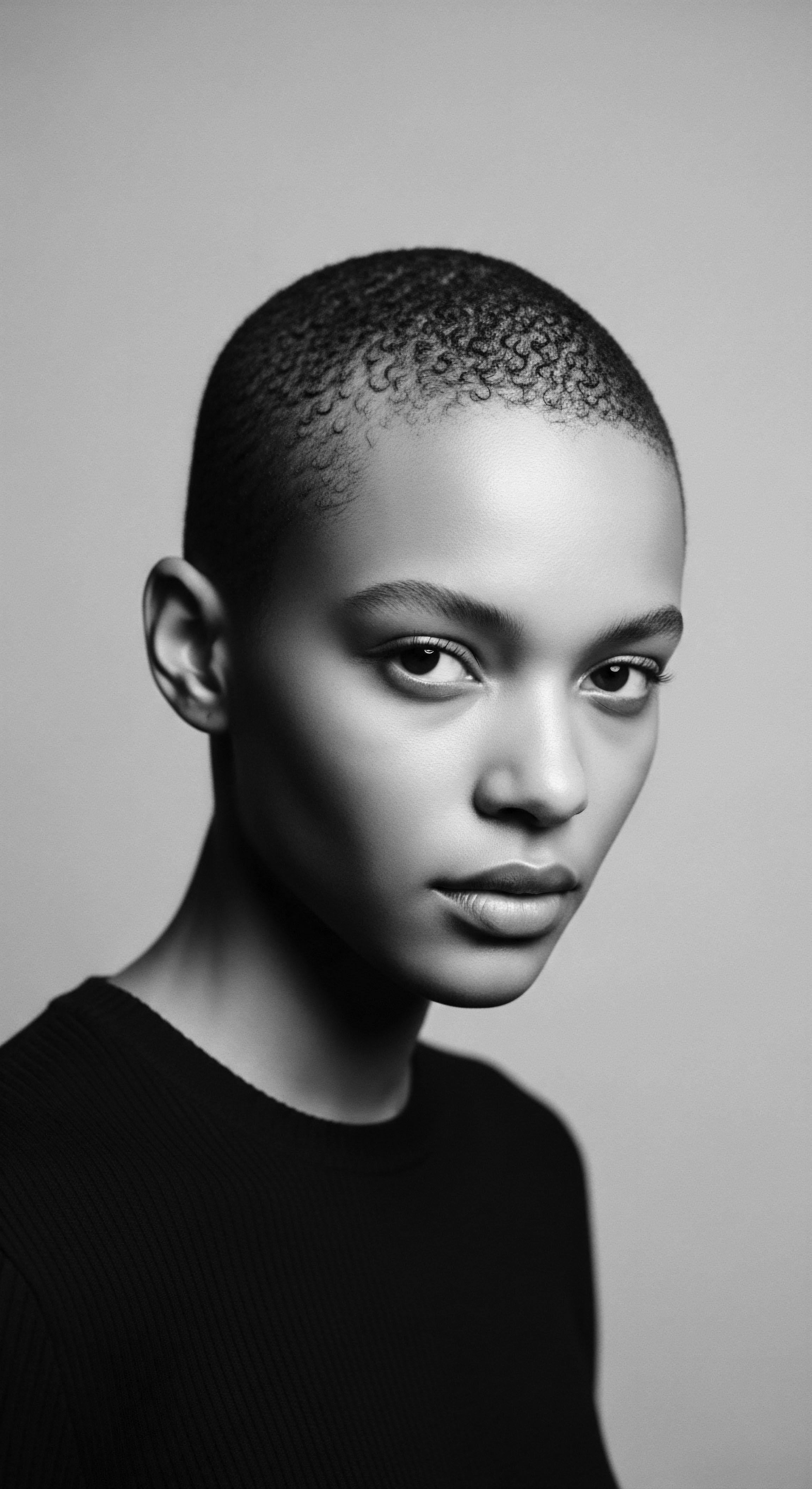
Reflection on the Heritage of Climate Regulation
As we close this contemplation on Climate Regulation within the luminous context of textured hair heritage, we stand before a realization both ancient and eternally new. The journey from elemental biology to ancestral practices, culminating in the intricate cultural tapestries of identity, affirms hair as an eloquent storyteller. It is an unbound helix, carrying not merely genetic code, but the very echoes of wind, sun, and rain upon ancestral scalps, alongside the wisdom gleaned from countless seasons.
The tender thread connecting generations reveals that Climate Regulation for Black and mixed-race hair is not a static scientific concept; it is a living, breathing testament to resilience and ingenuity. Our forebears did not possess laboratories or complex chemical analyses, yet they possessed an intimate, embodied knowledge of their environment and the profound capacity of nature to provide solace and sustenance for their strands. This deep wisdom, passed down through touch, through observation, through shared rituals, enabled hair to not only survive but to truly flourish under diverse skies.
We learn that the magnificent coils and intricate patterns of textured hair are themselves a marvel of climatic design, offering innate protection and unique responsiveness. And layered upon this biological foundation are the rituals – the meticulous oiling, the protective braiding, the use of indigenous pastes like Otjize and Omutyuula – which represent humanity’s conscious partnership with nature. These practices, born from necessity and refined by love, were far more than superficial beautification. They were acts of profound self-preservation, communal bonding, and a continuous dialogue with the natural world.
The enduring significance of this heritage is that it reminds us that true care is often about listening to the whispers of our lineage, honoring the wisdom woven into our very strands. It invites us to recognize that the hair on our heads is not merely a fiber; it is a repository of history, a symbol of adaptive spirit, and a vibrant connection to a legacy of beauty that dared to thrive, unfettered, under every sun. May we continue to hear these echoes from the source, cherishing the tender thread of care, and celebrating the unbound helix of identity that our hair so gloriously represents.
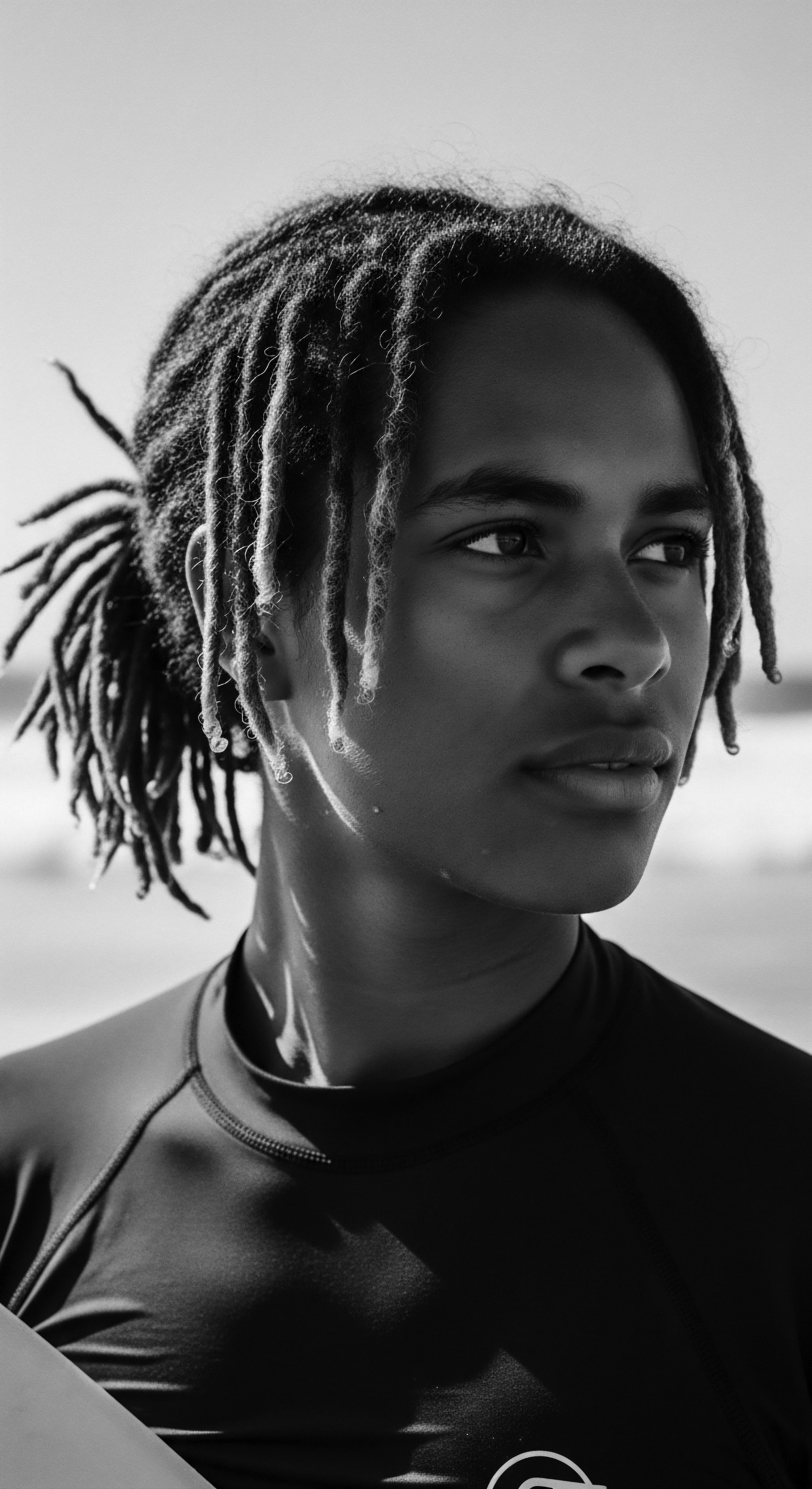
References
- Lasisi, Michael, et al. “Human scalp hair as a thermoregulatory adaptation.” Proceedings of the National Academy of Sciences 120, no. 25 (2023) ❉ e2300004120.
- Obeng, J. P. “The Ethnography of Hair in Ghana.” Journal of the Ghana National Commission for Culture 2, no. 1 (2012).
- Goreja, W. G. Shea Butter ❉ The Nourishing Power of Africa’s Gold. A VSP, 2004.
- Mwinga, F. K. et al. “Ethnobotanical Survey of Medicinal Plants Used for Cosmetic and Hair Care Purposes in the Xhosa Community, South Africa.” Journal of Ethnopharmacology 240 (2019) ❉ 111956.
- Byrd, A. D. and L. D. Tharps. Hair Story ❉ Untangling the Roots of Black Hair in America. St. Martin’s Press, 2001.
- Akbari, R. “The Cultural Significance of Hair in African Societies.” International Journal of African Cultural Studies 8, no. 2 (2018) ❉ 15-30.
- Khumalo, N. P. et al. “What African hair tells us about its response to grooming.” Clinical and Experimental Dermatology 33, no. 1 (2008) ❉ 36-41.
- Blay, K. Hair Story, Our Story ❉ The Cultural Journey of Hair in the African Diaspora. Black Beauty Archives, 2020.
